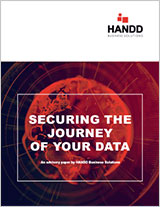DC Blog
Learn how to keep your business, its staff and your devices protected with our free resources
-
Report
5 questions you need to answer to protect your critical data
Have you taken the decision to integrate a data classification solution?
If so, you’ll need a data classification policy – but please don’t mistake a data classification policy for a list of classification labels.
A data classification policy should have at its heart the objective of keeping your data safe.
An effective data classification policy will also save you money, improve your regulatory compliance and reduce (if not remove) the risk of data loss from your organisation – and with penalties becoming steeper, that’s got to be a good thing.
So what is a data classification policy? What should it do? And how can you make sure it does the job?
What is a data classification policy and why is it important?
Whilst a data classification policy should determine the classifications to be used for data, it should also help you to determine critical and sensitive data, and illustrate, in granular detail, how to handle your sensitive data at every stage of its lifecycle.
To effectively protect your data, your classification policy needs to use visual markings, metadata and handling rules to help you meet each of the 5 steps towards protecting your critical data – view our report on 3 things most data classification policies miss out for more info.
5 questions your data policy needs to address to protect your critical data
Your data classification policy should determine:
- How to identify data.
What labels will you use to identify data to be protected? Will these labels be the same for each department or will certain departments demand their own classification policy?
- How to discover your data.
How and where should each class of data be stored and who should have access to it? Aside from ensuring your more sensitive data is stored securely, it also means that you can streamline your data storage budget, only using more expensive storage for the data files that need it.
- How you will classify your data and how each data file should be handled.
This will help you to determine exactly how data users should access, send and receive data files of each category.
- How you will secure your data by using classifications to drive downstream technologies to protect your data.
By including granular details on the downstream technologies that will be triggered automatically to protect data classification you enhance reliability and reduce complexity within workflow for users.
- How you will monitor your data – what classifications will you monitor and how? Will you rely on alerts or manage regular audits?
The inclusion of this sort of detail will be invaluable when it comes to proving regulatory compliance when required. It’ll also help to ensure your data is locked down effectively and spot potential malicious or careless activity early on.
By ensuring that your data classification policy covers each of these elements, you’ll be able to maximise the effectiveness of data protection within your organisation. For more information on how to create the perfect data classification policy, download our white paper How to create the perfect data classification policy.
- How to identify data.


